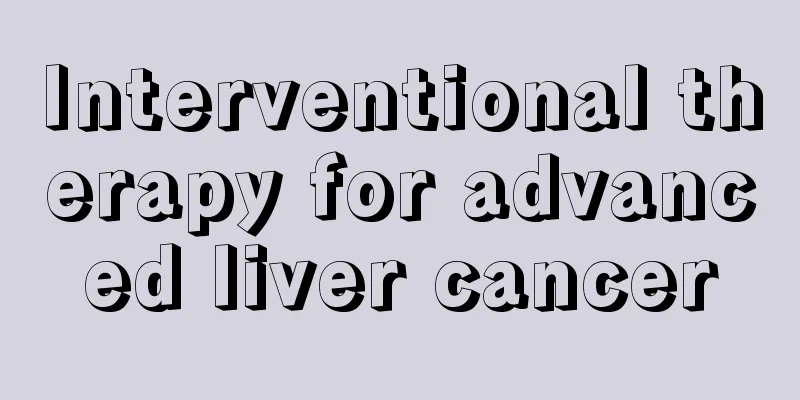Interventional therapy for advanced liver cancer

|
Interventional treatment of liver cancer refers to a type of regional chemotherapy that injects anticancer drugs or embolic agents into the hepatic artery via femoral artery catheterization. It is currently the preferred method for non-laparotomy treatment of liver cancer, and its efficacy has been confirmed. It is mainly aimed at patients with advanced liver cancer. The main principle is to administer drugs to the liver cancer supply artery or embolize the hepatic artery through a catheter. There are three methods: selective hepatic artery perfusion therapy, selective hepatic artery embolization, and selective hepatic artery chemoembolization. The so-called selective hepatic artery perfusion therapy is to puncture a small incision of 3 to 5 mm on the skin, insert a catheter into the artery to supply blood to the liver cancer, and then administer the drug through the catheter. The difference lies in the different drugs given. Selective hepatic artery embolization, as the name suggests, is to selectively inject embolic agents into tumor blood vessels and tumor blood supply arteries through a catheter to block the blood supply to the tumor. The common point between selective hepatic artery perfusion therapy and selective hepatic artery embolization is that both use drugs to affect or block the tumor vascular bed from the blood supply artery, thereby killing or inhibiting tumor cells. Selective hepatic artery chemoembolization is to give both chemotherapy drugs and embolic agents through a catheter, using both routes together. The advantages of interventional therapy are that its local drug concentration is dozens of times higher than that of systemic chemotherapy, and it blocks the blood supply to the tumor, which is not only relatively less toxic, but also more effective. In addition, it is simple to operate, safe and reliable, and can be performed on the elderly, the weak, and those with other diseases without general anesthesia, so its cost is relatively low. |
<<: Auxiliary examination methods for breast cancer
>>: How to improve the quality of life of patients with liver cancer
Recommend
What can I use instead of toothpaste
Paying attention to oral hygiene should be someth...
What will happen if kidney stones are not treated
Patients with kidney stones certainly cannot igno...
What are the symptoms of recurrence of thyroid carcinoma? Is the recurrence rate of thyroid carcinoma high?
The incidence of thyroid cancer is increasing yea...
What are the symptoms of broken long wind
Broken wind refers to certain parts of the body w...
How to prevent osteosarcoma in spring
Many diseases will emerge in spring. Osteosarcoma...
What supplements are good for summer?
The hot weather in summer can easily cause people...
What are the effects of various treatments for advanced rectal cancer?
Surgery is one of the treatment methods for recta...
Laser mole removal and mole removal with medicine
If a person has a mole on his face in the right p...
When does the facial bones develop?
We all know that people stop developing when they...
How does the Gudong heart rate monitor work
The Gudong heart rate belt may affect our heartbe...
What can't people with spots eat
People who often get spots need to pay attention ...
What does tracheal diverticulum mean
Tracheal diverticulum is a type of tracheal disea...
How to deal with no water during sex
During intercourse, if a woman's private part...
The harm of drinking hot water from a plastic cup
When buying a cup to drink water, people usually ...
Can gout appear in the knee?
Many people believe that gout symptoms only appea...









